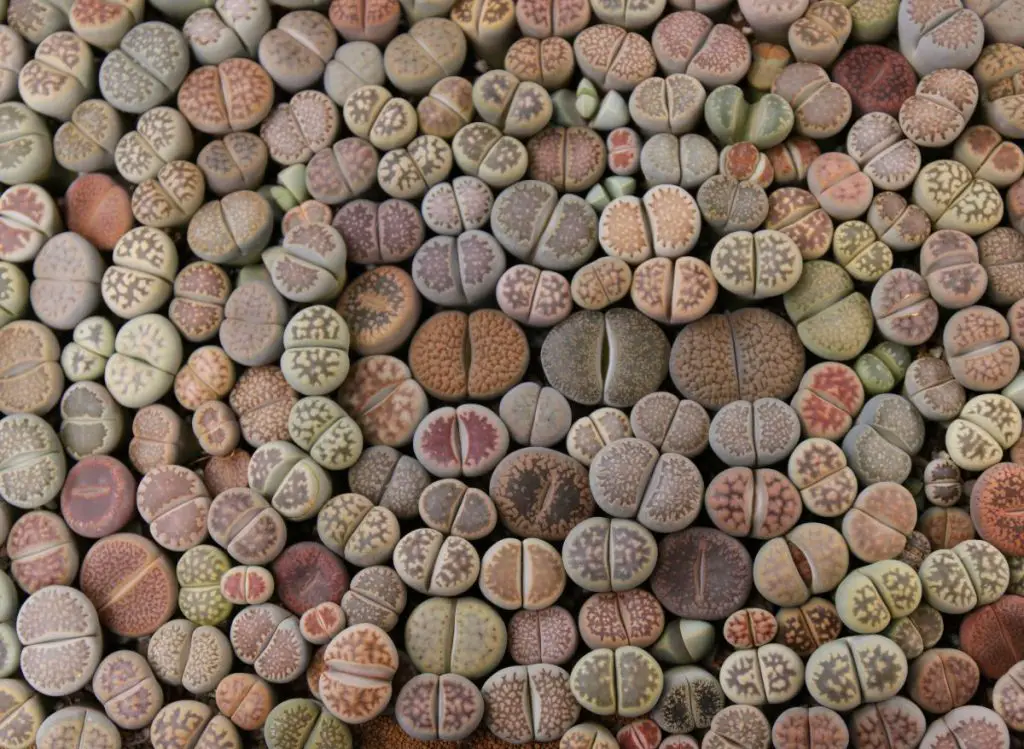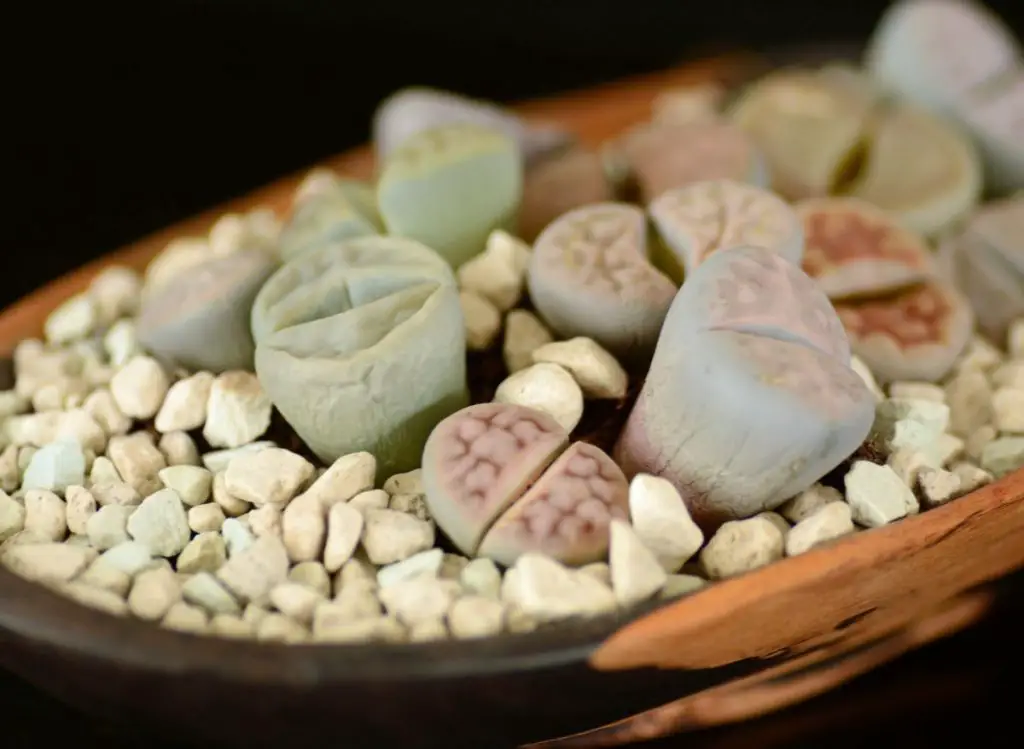
Lithops, also known as living stones, are intriguing and unique succulents that are native to South Africa. In recent years, Lithops have gained popularity for their ability to mimic stones in appearance, making them a perfect option for rock gardens or indoor succulent collections. One of the most fascinating aspects of lithops is their ability to split or divide.
So, when do Lithops split? Lithops generally split when ready to produce new leaves or flower buds. The splitting process often starts within the first year of the plant’s growing cycle, depending on the growing conditions and the plant’s age. Also, splitting usually starts at the edges of the existing leaves, and a gap emerges between their leaves.
Read on to find out everything you need to know about when do Lithops split. Check out this article if you wonder how to know if your Lithops are Splitting with 6 Signs to Look for.
What Does Lithops Plants Splitting Mean?
Splitting is the natural reproduction process of Lithops plants, where new “baby” plants will grow from the main plant. Generally, splitting happens in autumn or spring. This timing corresponds with the plants’ natural cycle, where they tend to grow during autumn and winter and bloom during spring (Source: University of Wisconsin-Madison Division of Extension)
As the lithops grows, it will eventually reach a point where it can no longer expand in its current form, which is when it will split, depending on various factors, such as the plant’s age, size, and general health. And it might take anywhere from a few weeks to several months for lithops to split.
Factor That Affects Lithops’ Splitting Timing
While there are various factors that can influence the timing, such as age, size, and general health, it’s essential to provide the correct conditions for germination and growth.
Lithops are fascinating plants that are easy to care for, and their splitting process only adds to their intrigue. Here are the key factors affecting when Lithops split. Watch this video to learn how to care for Lithops.
1- Growing Conditions of Lithops
The timing of the split process depends on several factors, including the age, health, and growing conditions of Lithops. In general, if the plant is well-nourished, receives good lighting, and has reached maturity, it’s likely to reproduce rather quickly.
On the other hand, young plants or those growing in unfavorable conditions may take a few more years before splitting. Therefore, if you’re trying to determine when your lithops will split, it’s important to identify the stage of the plant’s maturity.
2- Lithops’ Growing Season
Another factor that affects Lithops’ splitting timing is the season. Lithops have a distinctive life cycle, which is linked to the changing seasons in their native habitat. During the summer months, they remain dormant and are almost invisible as they merge with the dusty soil.
However, as the autumn rains arrive and cooler temperatures set in, lithops undergo a remarkable transformation. They begin to swell, and the old leaves shrink, wither, and eventually fall away.
During autumn, the plant absorbs as much water as possible so it can survive harsh, dry seasons. During this time, it also grows new leaves to replace the older, drier ones. This stage may take a few weeks or even months, usually culminating in the splitting process during the winter months. Watch this video to learn what you need to know to keep your Lithops alive.

3- Lighting
Lighting also plays a role in the reproduction of Lithops plants as they require high amounts of sunlight to grow, but they must also avoid direct exposure to the sun in the afternoon when the heat can be overwhelming.
The general recommendation is to keep them in bright places with little direct sunlight. If you have a lithops in an indoor collection, you may want to consider adding a grow light to ensure it receives ample lighting. Here is a video on how to grow Lithops.
4- Temperature and Humidity
Temperature and humidity also play a vital role in determining when lithops split. In general, lithops thrive in temperatures that range from 60 to 70°F (15 to 21°C).
During the splitting season, it is okay to keep them at slightly cooler temperatures, around 50 to 60°F (10 to 15°C), to encourage splitting. However, sudden temperature fluctuations or excessively dry conditions may delay or even prevent splitting, so it’s crucial to monitor these conditions.
What to read next:
- How Long Does It Take for Lithops to Split?
- When do Lithops Actually Flower: All You Need to Know!
- Lithops Growth Cycle: Everything you need to know!
Wrapping Up
While it’s difficult to pinpoint the exact timing of the splitting process for lithops, there are factors you can consider that will help you predict when it will occur.
Age, growing conditions, season, lighting, temperature, and humidity play a critical role in determining the plant’s split timing.
I believe that by taking good care of your Lithops and being patient, it will reward you with its amazing “stone-like” appearance.

